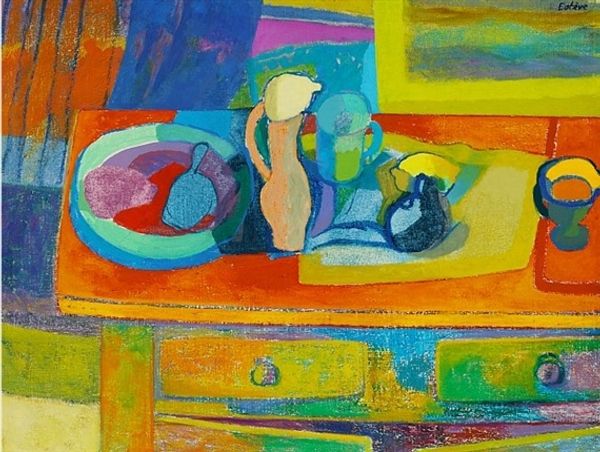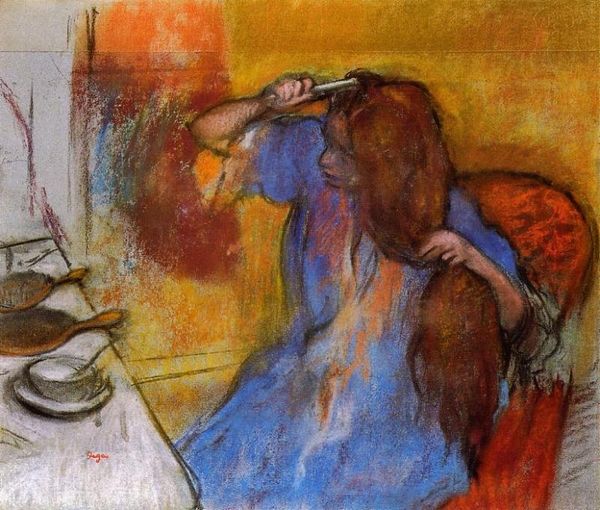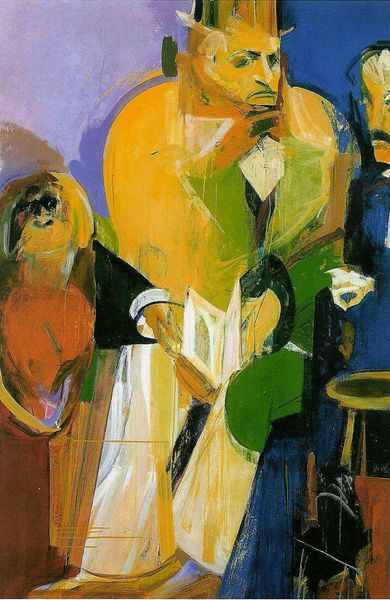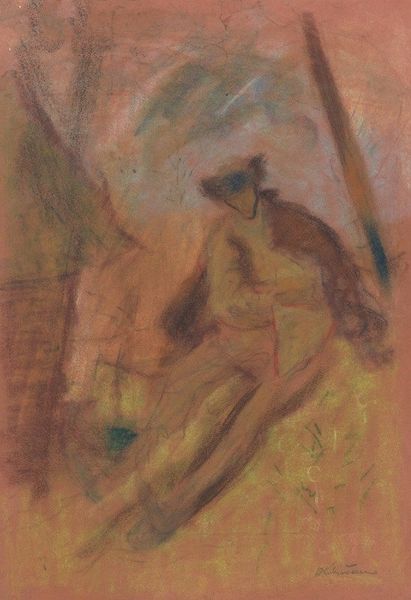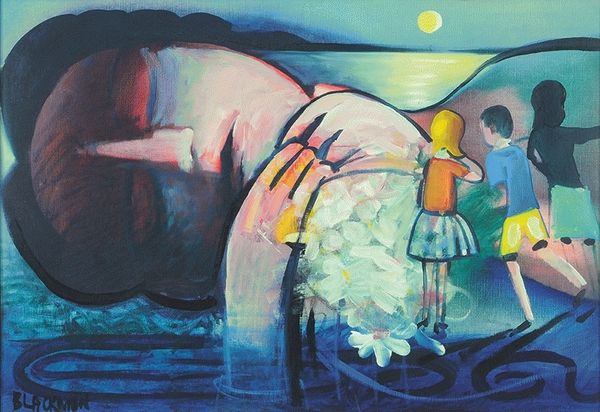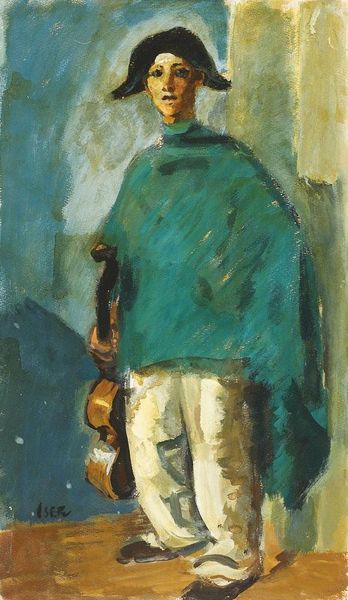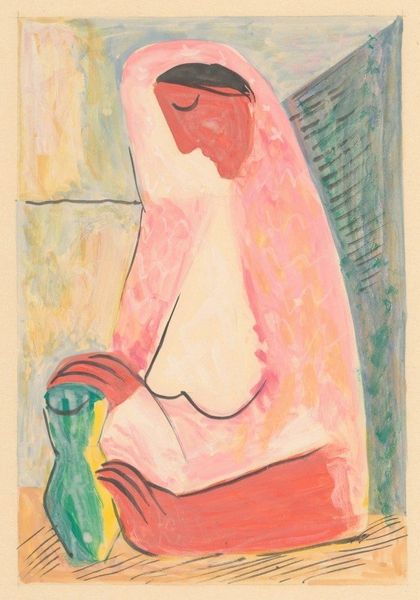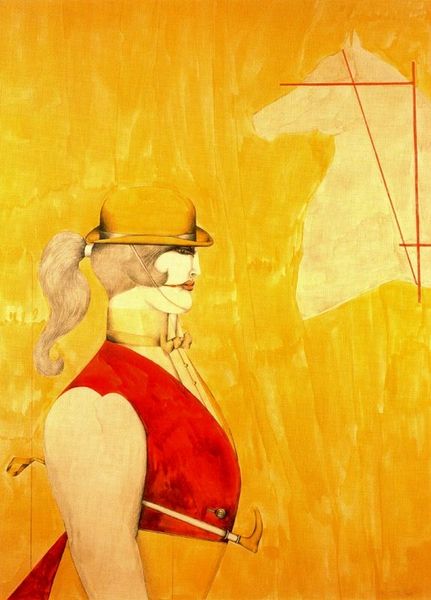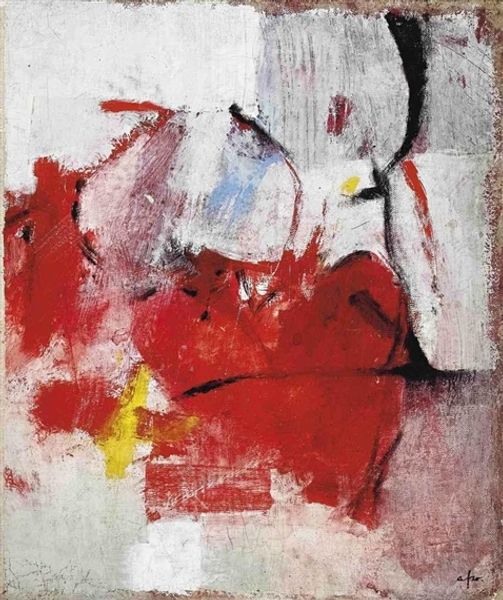
painting, acrylic-paint
#
pattern-and-decoration
#
acrylic
#
non-objective-art
#
painting
#
acrylic-paint
#
oil painting
#
neo expressionist
#
abstraction
#
post-impressionism
#
watercolor
Copyright: Miriam Schapiro,Fair Use
Curator: Welcome. Here we have Miriam Schapiro’s, "Pandora," rendered with acrylic paint. It strikes me as a deeply personal visual language at play. What is your initial reaction to this artwork? Editor: Well, I find myself drawn to its emotional intensity. There is a tension here, between the bold, almost brash shapes, and the softer, washed-out tones, creating a really unique space for introspection. Curator: Absolutely. Schapiro's work, particularly during this period, often intersected with feminist art practices, aiming to re-evaluate women’s roles in art history. Consider the myth of Pandora, a figure often vilified. How might that frame our understanding of this piece? Editor: Exactly. Looking at "Pandora" through a feminist lens makes you consider the artwork’s capacity for self-definition and the exploration of female identity within a patriarchal framework. Are those geometrical shapes symbolic in some way, representing aspects of a complex, unfolding story? Curator: They very well might be. Schapiro’s work engages with abstraction while maintaining strong links to cultural narratives and lived experience. It pushes the boundaries of what is considered inherently female. In her other works, we know, she has integrated domestic craft materials into a fine art space, forcing that conversation around craft versus ‘high art’. Editor: Right. And in light of the artwork's historical context, especially considering women artists’ exclusion from prominent displays throughout art history, displaying artwork of this kind offers powerful commentary, expanding and redefining aesthetic canons. Curator: The very act of an exhibition like this becomes a critical space. One that is both about representation and engaging broader questions about artistic value and legacy. Editor: So as we come to an end, how can a viewer coming to this for the first time start engaging critically with pieces such as “Pandora”? Curator: We need to recognize that artists’ visual languages are not just aesthetic choices but intentional articulations reflecting social, historical, and personal perspectives. The power comes from creating our own relationships with these visual narratives, informed by intersectional ways of thinking and knowing. Editor: I agree entirely, recognizing that an individual work of art serves as a cultural marker for self-definition, and, perhaps, collective liberation.
Comments
No comments
Be the first to comment and join the conversation on the ultimate creative platform.
